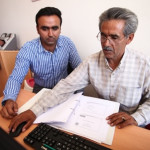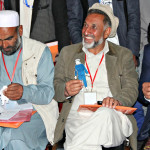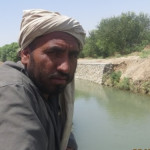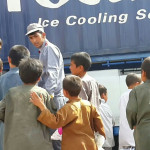
The Capacity Building and Change Management Program-II, which runs from 2014 to 2017, is a $20 million project that embeds Afghan change management specialists in critical directorates and regional agriculture and livestock ministries. Since the program began last year, 344 people in provinces across Afghanistan have received technology training.

Ajmal* runs a shop that sells pesticides in Jalalabad in eastern Afghanistan. Until recently, he was unaware that protective clothing should be worn while spraying and that some chemicals are harmful to the environment and are banned by the government.

Kandahar Food Zone intervention programs are designed to support alternatives to poppy cultivation. The goal is to strengthen and diversify legal rural livelihoods in targeted districts by identifying and addressing the root causes and sources of instability that lead to opium poppy cultivation. The two-year, $18.7 million program began in July 2013.

Until recently, Maroof* wasn’t able to grow his metalworking business because the shop, in Shibirghan in the northern Afghan province of Jawzjan, could not keep up with the competition. Its production capacity was limited and so were the tools used to make the doors, window frames, fencing and corrugated steel panels that were in demand.

Summer temperatures can soar to 109 F in Qala-i-Naw, capital of Afghanistan’s northwestern province of Badghis. The power supply is erratic and most households don’t have refrigerators, which can be a problem—as well as a business opportunity.








Comment
Make a general inquiry or suggest an improvement.